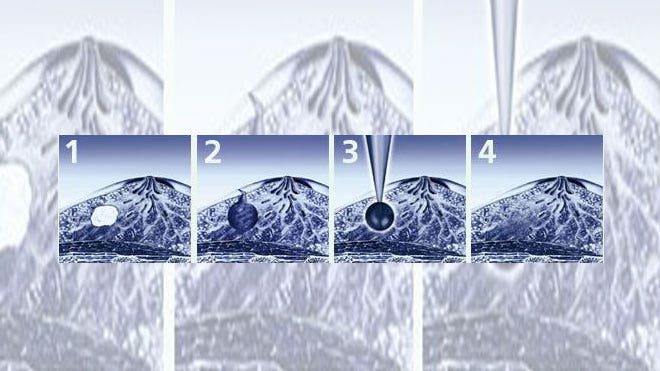One-day radiation therapy a new alternative for breast cancer patients
Published May 02, 2013
FoxNews.com
Born with a congenital heart defect, Elaine LaCross was no stranger to illness. She wasn’t exactly surprised when she was diagnosed with early stage breast cancer in 2012 at the age of 73, because her mom had died of breast cancer at a young age.
Her biggest concern was logistics. Because of her heart issues, she had to travel to a major medical center for treatment, and she chose the Cleveland Clinic, a nine-hour drive from her rural home in Michigan.
But she was the primary caregiver for her husband, who has Parkinson’s disease, so returning for six weeks of daily radiation treatment would be difficult.
But, her doctor thought she’d be a great candidate for another type of radiation, a procedure called intra-operative radiation. It is one of several types of partial breast irradiation, alternatives to whole breast radiation, the standard procedure.
Several large trials have shown that in women with early stage breast cancer who have a lumpectomy, irradiating just the area where the tumor was removed results in recurrence rates similar to rates after whole breast radiation.
“There was some skepticism when the initial results came out because of the relatively short follow up, but this past December, updated results showed a follow up of six years with similar results,” said Dr. Stephen Grobmyer, director of the breast center at the Cleveland Clinic, and LaCross' surgeon.
“In the last 10 to 15 years, we’ve seen that when breast cancer recurs, the most common site it recurs is where you had the cancer before.”
This suggests radiating the entire breast may be over-treatment for some women.
Candidates for the procedure are women with early stage breast cancer, who have small tumors under about 2 centimeters, and who have hormone sensitive breast cancers, with no metastases to the lymph nodes. In more advanced cases, who are considered higher risk of recurrences, the whole breast is radiated to kill off any other cancers that may be developing.
In intra-operative radiation, patients are given the entire dose of radiation at once, though the total amount of radiation is less than the cumulative dose a woman receives when radiation is given over a period of six weeks. The surgeon first removes the tumor from the breast. Then, the radiation oncologist places a radiation device, which looks like a golf ball on a stick, into the cavity that’s left from the tumor removal.
The radiation treatment last anywhere from 19 to 45 minutes, adding that much time to the surgery.
Aside from the convenience of a single radiation treatment, the radiation is targeted at the cancer site so there’s less damage to surrounding healthy tissue, including the lungs or heart. There’s also less side effects like fatigue, burns, swelling, pain and skin thickening, since the device doesn’t radiate through the skin.
“For a long time, patients have been over-treated, but as time goes on, we’re learning that certain patients don’t need as extensive treatments and can have very good outcomes,” Grobmyer said. “As more studies come out, and continue to show this is a beneficial approach, there will be more widespread acceptance."
Currently, about 40 medical centers offer this type of treatment.
LaCross had the surgery in January and went home the same day. She said she had a little redness, but no burns or other side effects and was able to resume her active lifestyle almost immediately.
She recently had a follow-up appointment and received a clean bill of health.
LaCross said the treatment was easier "without all the problems. I felt confident in the treatment I got."
Read more: http://www.foxnews.com/health/2013/05/02/one-day-radiation-therapy-new-alternative-for-breast-cancer-patients/#ixzz2SErJbwJg


 and
and
No comments:
Post a Comment